2019 | Generation
In Step with the Times
The duration of things, reflections on places and new, female perspectives: in this year’s Generation programme, there is something hopeful and combative, and something from the past and the future, in a selection that is for the very young as well as grown-up audiences. In this interview, section head Maryanne Redpath offers us a glimpse into the wide-ranging programme, from feature films to documentary forms and the short format.
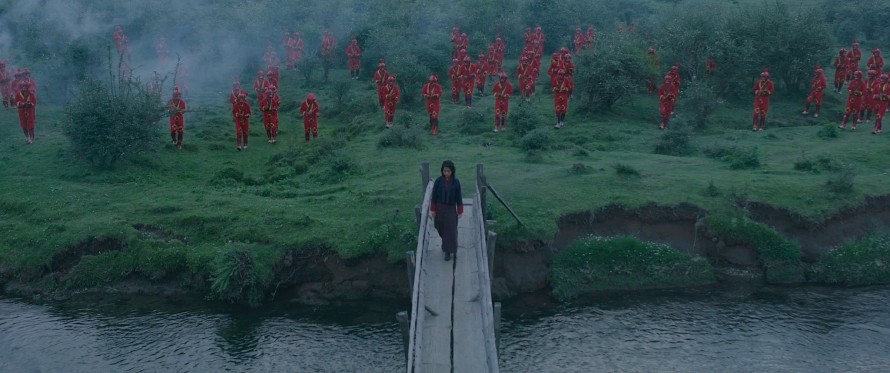
The Red Phallus by Tashi Gyeltshen
Traditionally, and once again this year, you have drawn your selection from a huge number of submitted films – around 2,500 this time. How do you find your bearings in this process?
It helps a lot that, as a section, we know our audience very well. The demographics for the Kplus competition, formed in 2007 from what was previously the Kinderfilmfest, are just as familiar to us as those for our 14plus programme. Since the age recommendations for the films are largely set by us, this is invaluable. The recommendations are open and have no upper limit, so as wide an audience as possible can be covered. Naturally, we always focus on the respective target-age groups and we often find parallels between the perspectives of the main characters and the audience.
The films often tell their stories through the eyes of their young protagonists: a child can see themselves and their own problems, joys and wishes, or those of someone the same age as them in a different culture or political situation. But the works simultaneously hold up a mirror to the adult world and reveal its dysfunctions. In this way, the films we screen are not only eminently suitable for young people but for adult audiences as well – and for young adult audiences.
It is striking that there is a wide variety of decidedly female perspectives in the selection, from both in front of and behind the camera. Which factors especially stand out in this regard?
You’re right, female perspectives are strongly represented, particularly in the 14plus programme. Overall, with regards to the filmmakers, we are at a rate of about 53 percent female.
Many of the stories are told from the point of view of young female protagonists in complex situations who are forced to make decisions that will radically change their lives. They are characters who are about to pass a point of no return. These girls and young women find themselves in circumstances that are unjust, dangerous and seem to be almost unbearable emotionally – and they react to them, often with drastic consequences.
A good example is The Red Phallus, directed by Tashi Gyeltshen, a film with an almost documentary quality, set in Bhutan with a cast of non-professional actors. It focuses on a young woman whose father makes wooden phalluses, a highly prestigious job which places him at the top level of the village pecking order. The film depicts a very patriarchal society. The young woman is subordinate to the structures in which she has grown up and suffers from that. Without wanting to give away too many spoilers: at the end of the film – and it takes a long, long time for her to get to this point – she makes a decision, in a way that is very decisive and energetic and, not to put too fine a point on it, shocking.
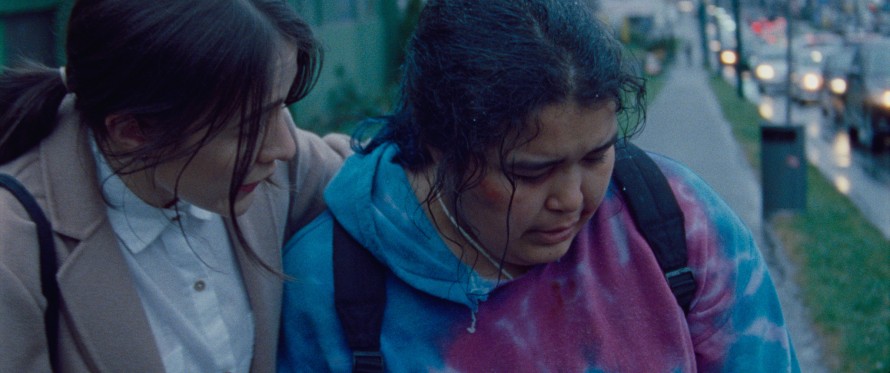
The Body Remembers When The World Broke Open by Elle-Máijá Tailfeathers and Kathleen Hepburn
Another example is The Body Remembers When The World Broke Open, directed by Elle-Máijá Tailfeathers and Kathleen Hepburn. This is a Canadian film with two female protagonists and very few takes which explores the question of how to find a way out of a cycle of violence. The younger of the two women comes from a very violent environment. She is battered by her boyfriend with whom she is expecting a child. By chance, she meets another woman, played by Elle-Máijá Tailfeathers, one of the film’s two directors. This character tries to help her but, in doing so, is forced to acknowledge just how difficult it is to break out of a toxic relationship. It is an intense, very thought-provoking film.
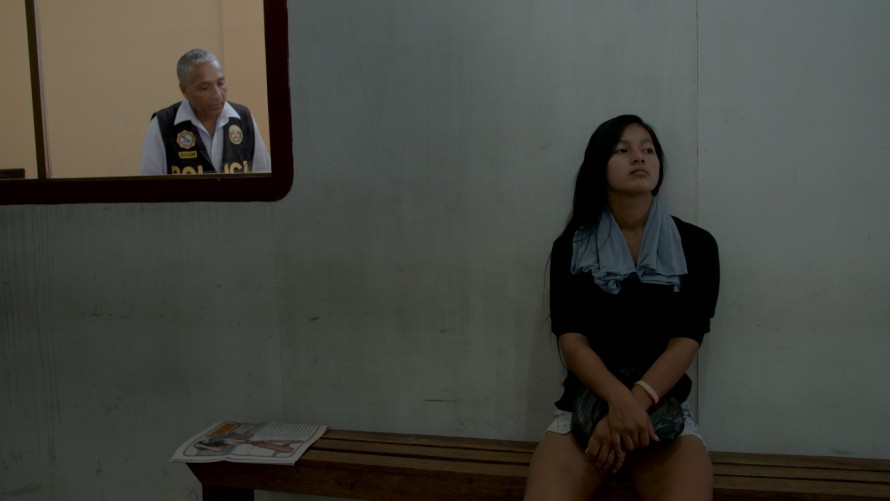
By the Name of Tania by Bénédicte Liénard
These themes are also to be found in documentary forms like, for example, Bénédicte Liénard's By the Name of Tania. Set in the north-Peruvian Amazon region, it tells the story of a young woman who wants to escape the oppressive limitations of her home village and becomes trapped in forced prostitution. We learn about her story in a kind of retrospective, as a reconstruction that is part of a police interview. The protagonist describes her experiences in quite an abstract way, but with a very interesting rhythm. The violence itself occurs off-screen, out of our sight. We discover that her survival strategy was to almost leave her own body, physically disassociating herself from it. Rather than delivering a concrete happy ending, the film leaves things much more open, but it does offer her the chance to be seen and heard, which I am sure will lead to valuable conversations. This shows how film can be a very potent medium, a means by which to effect changes in society. We hope that this film will help to do that.
Another important aspect, alongside these multifaceted observations of the female characters, is the question of the roles played by boys in the selected works and how their points of view are being conveyed?
We have many brilliant young male characters in the films, especially in the Kplus competition. And it is very important that we also explore them, even when we are focusing on women and film or on general equality in society. We need to start early if we want to prevent future abuse-of-power structures from forming and that means taking a close look at what is happening with the boys – in our programme, this is being shown in very diverse ways, in different cultures, situations and stories.
One example is the French coming-of-age story Daniel fait face (Daniel) by Marine Atlan which, in 60 minutes and in an extremely poetic way, tells the story of a boy for whom you could say puberty is knocking on the door. At the centre of the film is a situation where the protagonist becomes a voyeur – and we, the viewers, along with him. The girl he is observing realises that he is watching her and he feels ashamed; a large part of the film explores how he deals with this shame; it is a lot about gazes and perception.
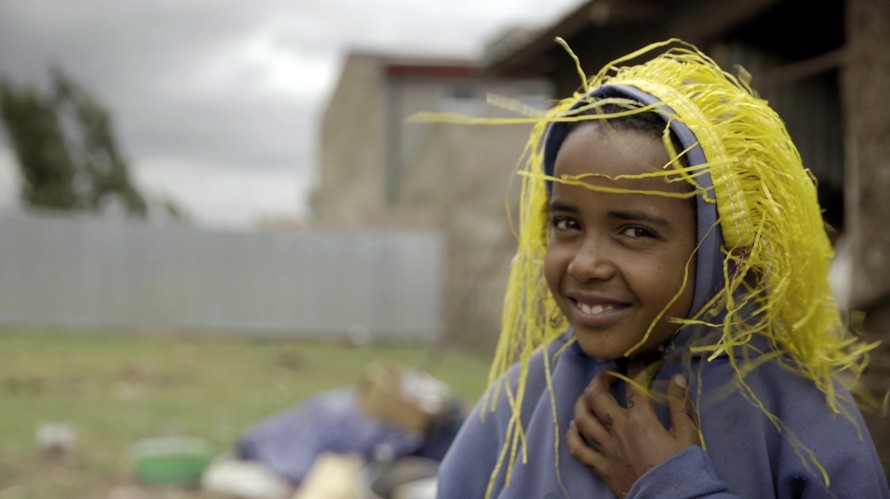
Anbessa by Mo Scarpelli
Then we have a totally different kind of documentary film, Anbessa, by Mo Scarpelli and set in Ethiopia. The protagonist lives with his mother in a hut at the edge of one of these satellite cities which have recently been popping up all over Ethiopia. He feels crowded out by the new high-rises and bored – but boredom breeds ingenuity; boredom makes people innovative and this boy passes time in a very creative way: he collects electronic scrap and uses it to build, for example, a lamp so they can have light in the hut at night. He also tries to make a rocket that will fly into space. He is full of imagination. At the same time, there is a traditional, mystical level – his mother tells him old legends – which interacts with the lived reality.
We also like to have boys in the programme such as the protagonist from Sune vs Sune, by Jon Holmberg, who is suddenly confronted by a rival of the same name. The film employs an incredible lightness of touch in tackling big topics: first love, wounded egos...
And Mijn bijzonder rare week met Tess (My Extraordinary Summer with Tess) by Steven Wouterlood, is a film like many in the programme in which we find both: the boy is the narrator but the girl – an extraordinary female character – is the driving force, the engine that gets everything going.
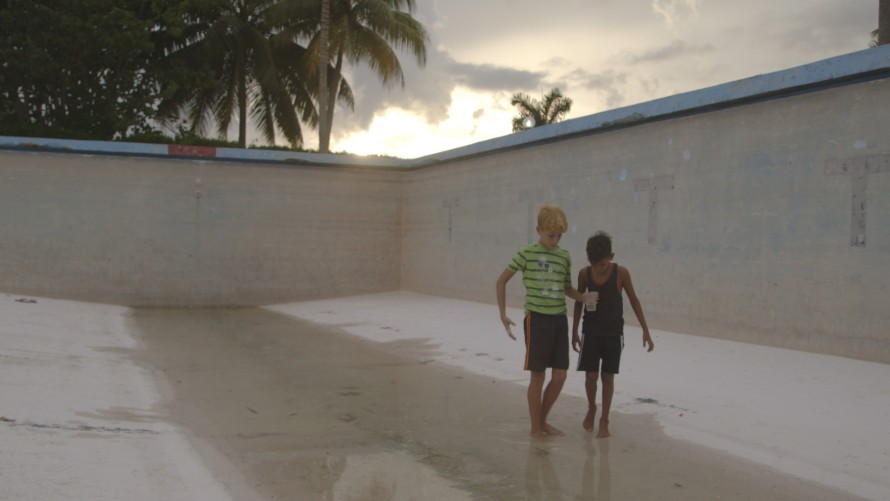
Baracoa by Pablo Briones and The Moving Picture Boys
As a medium that unfolds over time, film is implicitly concerned with the duration of things. But it appears that the works in this year’s edition are looking at time and how it is spent in an even more deliberate way, and that this is especially true of the documentary forms.
Yes, it’s as though a clock is ticking in these films. The passing of time plays a central role and also, as discussed, explores the phenomenon of boredom in its various forms. For example, Kinder (Kids), a German documentary, uses small, precisely observed moments to portray four city kids and their everyday lives in Berlin. At the same time, the film is an observation of time passing. The director, Nina Wesemann, has edited her graduation film from the University of Television and Film Munich in such a way that the audience don’t feel in the least bored; rather, we get the feeling that every second counts.
Another documentary is Baracoa, set in Cuba and directed by Pablo Briones and The Moving Picture Boys. It likewise tells, with an incredibly light touch, a story of boredom but also that of the young protagonists and how they live entirely in the here and now. As viewers, we don’t experience a classic story with three acts; it is much more about making perceptible the elasticity of time, its viscosity and also its idiosyncratic flow.
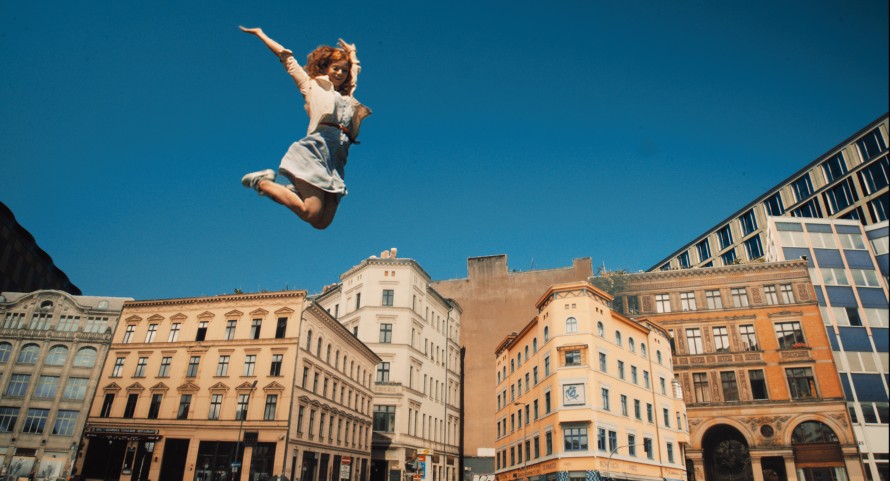
Marleen Lohse in Cleo by Erik Schmitt
So time becomes something that is very variable. How else is it played out?
Many films take a step back in time. This is true of our opening film in the Generation Kplus competition: Cleo by Erik Schmitt, a director with a very idiosyncratic style from whom we have already had two short films in the programme (Nashorn im Galopp / Rhino Full Throttle, Generation 2013 and Berlin Metanoia, Generation 2016). In a visually highly distinctive way, Cleo plots a treasure hunt adventure that literally moves backwards in time but ultimately ends up in the present. Such a retrospective view of an experienced past is also undertaken in Rekonstruktion Utøya (Reconstructing Utøya), directed by Carl Javér. This film, screening out of competition in our 14plus section, is very strong stuff from Norway that tackles the aftermath of the killing spree on the island in 2011. The film accompanies survivors of the attack as they use drama to replay the events in order to try and come to terms with them. The whole thing is done with great sensitivity and entirely eschews over-dramatisation. The fate of individuals is not on display. With this film, the post-screening discussion is extremely important to us. And a therapeutic confrontation with the past, a familial one particularly shaped by the father, is also depicted in another documentary from Scandinavia: The Magic Life of V by Tonislav Hristov. The film brings us very close to the protagonist and we virtually experience over a weekend with her how she uses extreme role play to progress, beginning with coming to terms with the past and then moving towards the present.
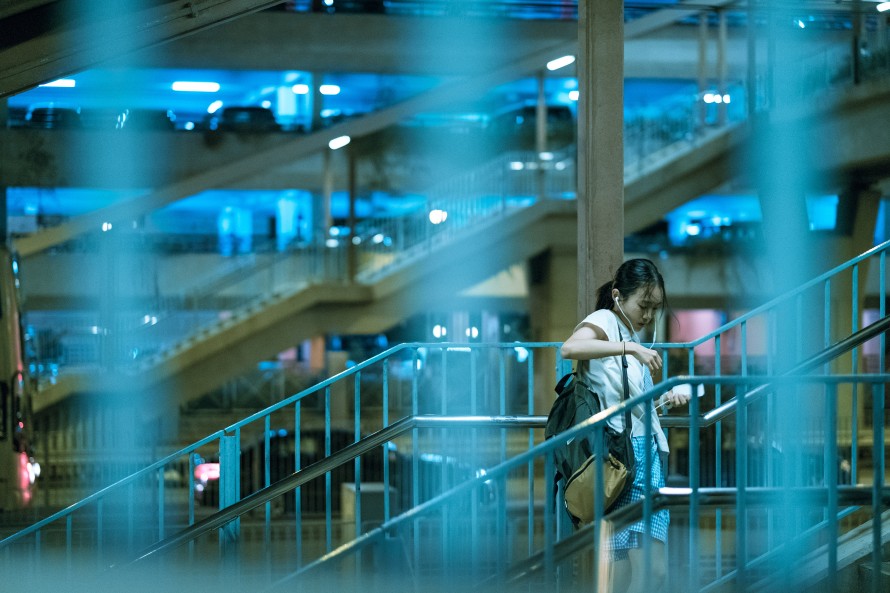
Guo chun tian (The Crossing) by Xue Bai
Alongside this temporal dimension, a reflection on the locations is also characteristic of this year’s films. A majority of the works focus intensely on questions about the (living) spaces of the protagonists. In this, a dichotomy between the city films and those about life in rural areas can be observed. I am thinking of films like Guo chun tian (The Crossing) directed by Xue Bai or Bulbul Can Sing by Rima Das.
Absolutely. Guo chun tian follows a young girl commuting between metropolises – between Hong Kong on one side and the Chinese mainland on the other – transporting smuggled goods. The metaphor of crossing borders comes into play here, and also that of a journey which is always an interior journey, too, and connected to the search for something.
The Korean film Beol-sae (House of Hummingbird), directed by Bo-ra Kim, also pays attention to the location where its events take place – Seoul in the middle of the 1990s – and likewise illustrates its protagonist via her environment, via the city through which she is roaming.
A tendency and, at the same time, a version of the traveling theme can also be seen in the cinematic connection of the two places – that is, in the motif of the child who longs to leave the village. In Bulbul Can Sing from India, the desire of the protagonists to break out of the too-tightly laced corset and no longer have to live lives dictated by the rigid social structures of the village community is very clear.
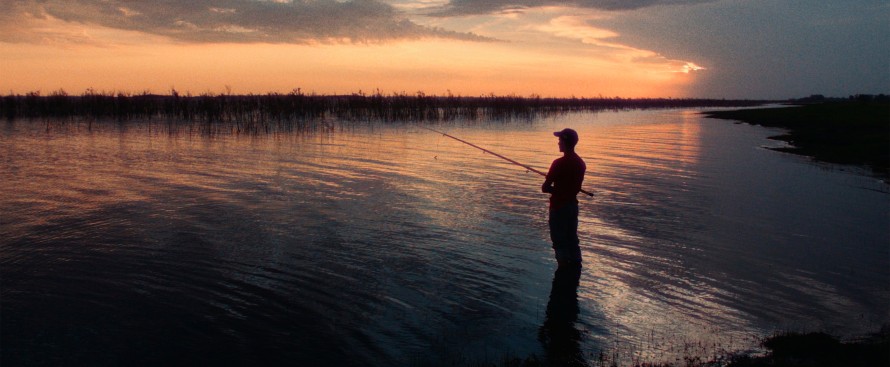
Los rugidos que alejan la tormenta (The Roars That Keep the Storm Away) by Santiago Reale
But there is also the reverse of this which is vividly shown in Los rugidos que alejan la tormenta (The Roars That Keep the Storm Away), an Argentinean short film by Santiago Reale in the 14plus programme: the protagonist here moves out of the overly loud and stressful city and returns to a very quiet, spiritual and meditative place in the countryside to live – very happily – as a hermit.
Alongside the feature films, Generation also traditionally curates two programmes – for both Kplus and 14plus – containing short forms. For young audiences, the collision of diverse topics and visual styles can perhaps be overwhelming. How do you ensure that the programme remains accessible and ‘digestible’ even for the youngest of audiences?
Putting together the short film programme is one of my favourite jobs as a curator. Once all the films have been confirmed, we take an intense look at which works can be combined with which and the order in which we want to show them – something which I already have at the back of my mind during the selection process. We try to create a programme that is rich in contrasts so we can hold the audience’s attention. We juxtapose different countries, topics and lengths – for us, 20 minutes per film is the maximum. We want to create a dramatic structure in which the films can battle it out with each other and where the juxtapositions make it possible to experience new contexts. In this way, we want to challenge our audiences without overwhelming them. That is our fundamental approach. We confront viewers with weird films, with adventurous works – and all in such a concise and condensed form, structure and content that every second – every millisecond – really counts. And so this is once again very much about questions of time, movement and stasis.
There are quite a few animated works among the short films. What can visitors look forward to this year here?
Once again we have some real crackers in the short film programme! They’re a pleasure not just for children but also for everyone else, including parents, carers and teachers because many of the films work on more than just one level. Story, directed by Jola Bańkowska, Kids by Michael Frei and Leaking Life by Shunsaku Hayashi are three incredibly great, highly contrasting animations in 14plus. They are about such different subject matters as dealing with the digital world and mass movements. These films work on an emotional and conceptual level and are visually stunning.
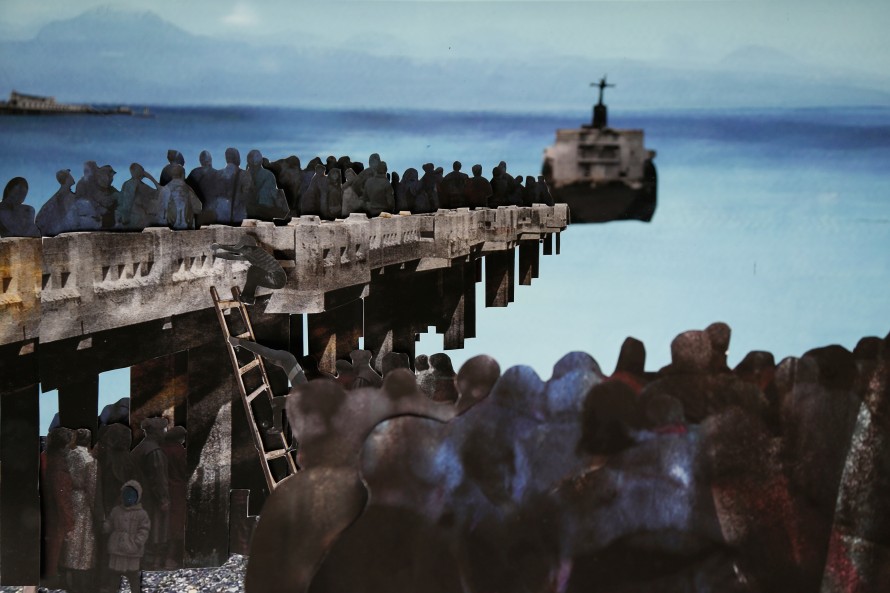
Armed Lullaby by Yana Ugrekhelidze
In Kplus we have the abstract Oh corbeau! Oh corbeau! (Oh Crow! Oh Crow!) by Pierre Garcia-Rennes from Canada, an incredibly visual work. And Armed Lullaby by Yana Ugrekhelidze, a very touching collage about refugee children – it’s very powerful.
A large part of the material we have discussed seems to be quite pessimistic – which counterbalances do you have in place to try and offset this impression of hopelessness?
Of course we also have some playful films. A good example is We Are Little Zombies from Japan, directed by Makoto Nagahisa, which is opening the 14plus competition. A dark topic but a very light film – colourful, quick, entertaining. It is about a group of teenagers who, following the death of their parents, go in search of their emotions. They form a band and become famous – a grandiose, life-affirming film, an absolute firework.
It is a similar case with 2040 by Damon Gameau, which tackles global warming and the associated climate change. A heavy topic but taken up in such a cheerful way with such a funky visual style that it really makes you feel hopeful.
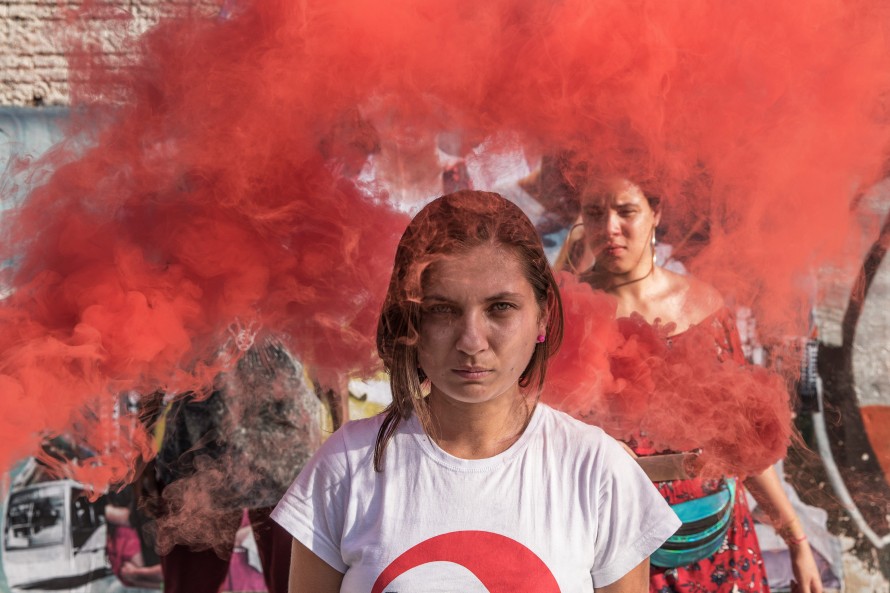
Espero tua (re)volta (Your Turn) by Eliza Capai
Your selection is also always shaped by a political stance, a certain rebelliousness. Are there any works you’d like to particularly highlight in this context?
Certainly. It’s important to mention the Brazilian documentary Espero tua (re)volta (Your Turn), directed by Eliza Capai. It portrays the efforts by schoolchildren over several years to revolutionise the school system from the ground up. The film doesn’t just show us, it pulls us right into the middle of this revolution. With mobile phone footage shot on the spot, the audience virtually joins them on the barricades. Especially considering the latest developments in this country following the recent presidential election, it is important that we show this film. To a certain extent it incorporates the spirit of the programme and is becoming more topical by the minute. We feel we have a responsibility and want to start a conversation with this work – and, of course, show solidarity.